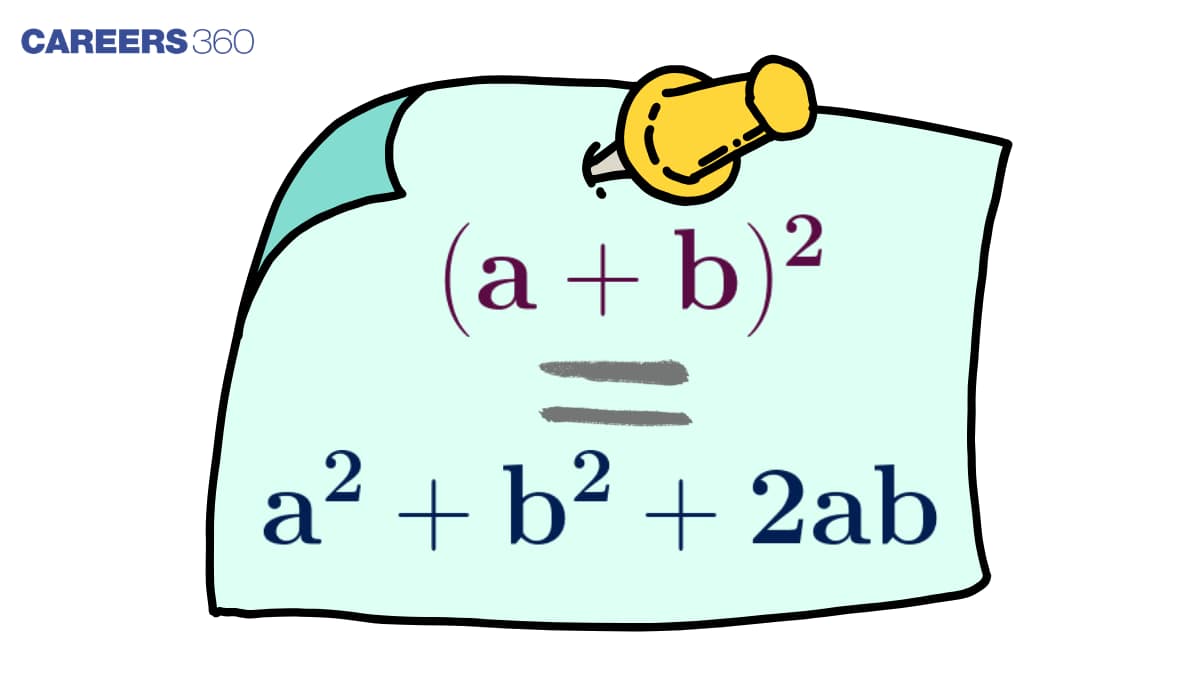a + b Whole Square : A Plus B Whole Square Formula - Proof | (a+b)^2 Formula
Mathematics is totally a game of formulas. In mathematics, solutions to most of the questions are found by using appropriate formulas. Generally, formulas for the square of sum of two numbers and the square of the difference of two numbers are used in expansion or in simplification. The formula of a plus b whole square is also one of the formulas which are mostly used in the expansion and simplification of a given expression. The whole square of a plus b means the product of a plus b with itself.
This Story also Contains
- Formula Of a Plus b Whole Square
- Examples Of a Plus b Whole Square
- Expansion Of a – b whole Square By Using Formula of a + b Whole Square
- Application Of a Plus b Whole Square In Real Life

Formula Of a Plus b Whole Square
In order to get the expanded form of a plus b whole square we have to multiply the a plus b with a plus b. Then by using the property or rule of algebraic multiplication we will get a + b whole square.
![]()
![]()
![]()
${(a + b)^2} = (a + b) \times (a + b)$
$(a + b) \times (a + b) = {a^2} + ab + ba + {b^2}$
${(a + b)^2} = {a^2} + 2ab + {b^2}$
Examples Of a Plus b Whole Square
Solve

Solve ${(10 + 5)^2}$
Solution:
![]()
![]()
${(10 + 5)^2} = {10^2} + 2 \times 10 \times 5 + {5^2}$
${10^2} + 2 \times 10 \times 5 + {5^2} = 100 + 100 + 25$
${(10 + 5)^2} = 225$
Solve

Solve ${(3a + b)^2}$
Solution:
![]()
![]()
${(3a + b)^2} = 9{a^2} + 2 \times 3a \times b + {b^2}$
${(3a + b)^2} = 9{a^2} + 6ab + {b^2}$
Expansion Of a – b whole Square By Using Formula of a + b Whole Square
In order to get expansion of a - b whole square we have to multiply the ‘a’ + (-b) with a + (-b). Then by using the property or rule of algebraic multiplication we will get a + b whole square.
![]()
${(a - b)^2} = (a + ( - b)) \times (a + ( - b))$
$(a + ( - b)) \times (a + ( - b)) = {a^2} - ab - ba + {b^2}$
${(a - b)^2} = {a^2} - 2ab + {b^2}$
Application Of a Plus b Whole Square In Real Life
In order to understand the application of a + b whole square in real life let us suppose you have to find the square of 1005 which is a large number you have two choices either you will multiply 1005 with 1005 which is time-consuming or you will use expansion form of a + b whole square which will reduce calculation as well as time.
![]()
![]()
![]()
![]()
${(1005)^2} = {(1000 + 5)^2}$
${(1000 + 5)^2} = {1000^2} + {5^2} + 2 \times 1000 \times 5$
${(1005)^2} = 1000000 + 25 + 10000$
${(1005)^2} = 1010025$
Frequently Asked Questions (FAQs)
${(a + b)^2} = {a^2} + 2ab + {b^2}$
${a^2} + 2ab + {b^2} = {a^2} + ab + ab + {b^2}$
${a^2} + ab + ab + {b^2} = a(a + b) + b(a + b)$
$a(a + b) + b(a + b) = (a + b)(a + b)$
$(a + b)(a + b) = {(a + b)^2}$
In order to get the expanded form of a plus b whole square we have to multiply the a plus b with a plus b. Then by using the property or rule of algebraic multiplication we will get a + b whole square.
${(a + b)^2} = (a + b) \times (a + b)$
$(a + b) \times (a + b) = {a^2} + ab + ba + {b^2}$
${(a + b)^2} = {a^2} + 2ab + {b^2}$
Whole cube means multiplication of the whole expression thrice with itself.
Whole square means multiplication of the whole expression twice with itself.
Simplification is a process of reducing large expressions into simple and small expressions. In other words, it is the process of making complex equations or expressions simple.